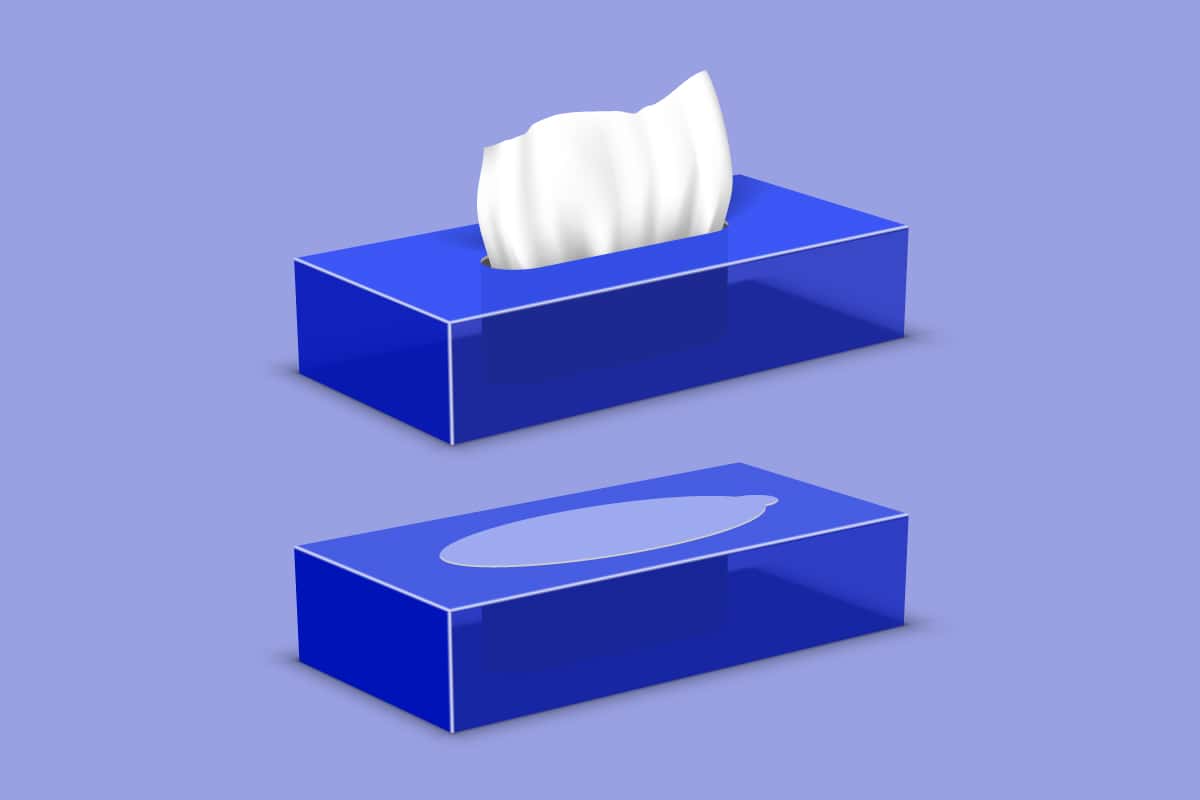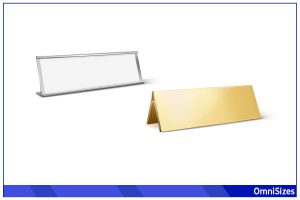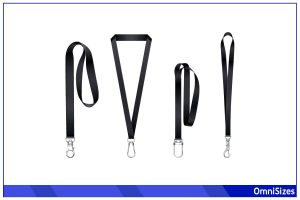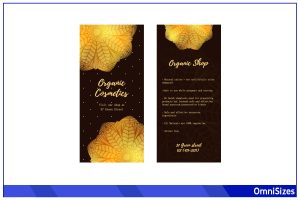The world of tissue box sizes is more intricate than you may have thought. Tissue boxes have evolved over time, not only in design but also in size. From homes to offices, and from cars to public spaces, the dimensions of a tissue box play a defining role in its utility and placement.
The standard tissue box size is typically 4.5 × 4.5 × 5.25 inches (11.4 × 11.4 × 13.3 cm). However, they also come in other dimensions like rectangular sizes or travel-friendly editions for on-the-go use.
This guide provides a comprehensive overview of tissue box dimensions, their significance, and factors influencing their sizes.
Standard Tissue Box Dimensions
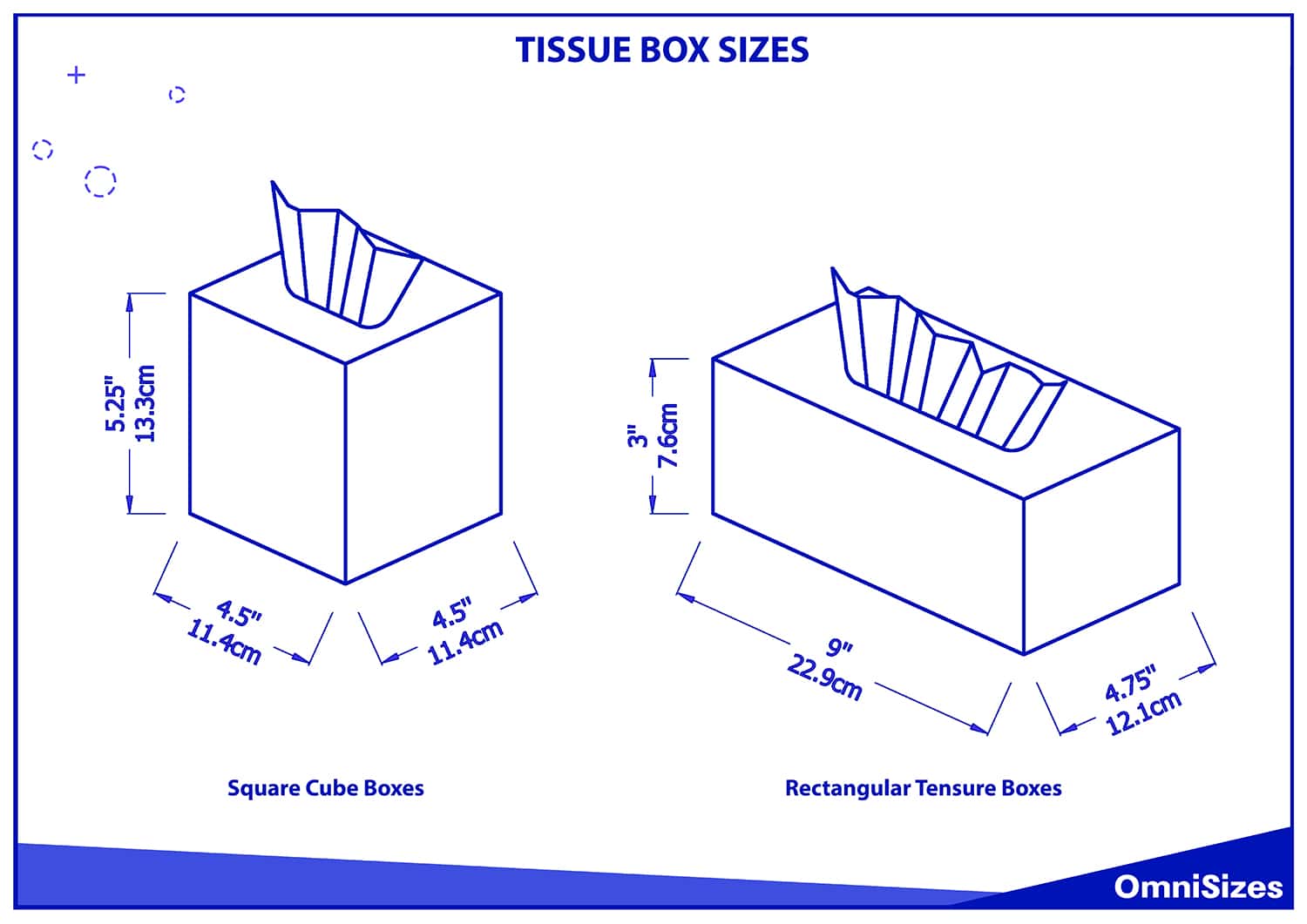
Tissue boxes, commonly found in households, offices, and various other places, come in specific sizes that most people recognize. These dimensions are designed for aesthetics and efficient use of space.
Cube Tissue Boxes
Cube tissue boxes, often referred to as boutique tissue boxes, have a square shape and are a popular choice for many. Their compact design makes them suitable for countertops, bedside tables, and bathrooms.
The standard size for cube tissue boxes is 4.5 × 4.5 × 5.25 inches (11.4 × 11.4 × 13.3 cm). This size is ideal for personal use and for spaces where a larger box might be intrusive. It’s common to see these in residential settings and in hotel rooms, given their space-saving properties.
Rectangular Tensure Boxes
Rectangular tissue boxes are elongated and can hold more tissues than cube boxes. Their design is practical, and they are commonly found in professional settings or areas with high tissue usage.
Most rectangular tissue boxes measure around 9 × 4.75 × 3 inches (22.9 × 12.1 × 7.6 cm). Due to their larger size, they’re excellent for office spaces, clinics, and classrooms. Their elongated shape allows them to fit conveniently on window sills, desks, or mounted tissue holders.
Specialty Tissue Box Sizes
Beyond the standard sizes, tissue boxes come in specialty dimensions tailored for unique needs and settings. These non-traditional sizes cater to specific situations and adaptability.
1. Travel-sized Tissue Boxes
When on the move, whether commuting, traveling, or simply out and about, there’s often a need for tissues. Travel-sized tissue boxes are designed for these moments.
Travel tissue boxes are compact, typically measuring around 3 × 2 × 1 inches (7.6 × 5.1 × 2.5 cm). Their size makes them a perfect fit for handbags, backpacks, car glove compartments, and even pockets.
2. Commercial Tissue Box Sizes
In places with a large footfall, like malls, theaters, or office buildings, the demand for tissues is high. Commercial tissue boxes are crafted to cater to these high-traffic areas.
Commercial tissue boxes are bulkier than the ones used in homes. They usually measure around 10 × 5 × 3.5 inches (25.4 × 12.7 × 8.9 cm). These dimensions allow for a larger tissue count, minimizing the need for frequent replacements.
3. Designer Tissue Boxes
For those with an eye for design, there are tissue boxes that are not just functional but also serve as decor pieces.
Designer tissue boxes don’t have a standard size but are often close to the dimensions of cube or rectangular boxes. What sets them apart is their unique designs, patterns, and materials, turning a simple tissue box into a statement piece.
4. Refill Packs
Refill packs are not exactly boxes, but they’re worth mentioning. These are simply packs of tissues without the box, intended to refill existing containers. Their size varies based on the number of tissues they contain. By skipping the box, they reduce waste and are a more eco-friendly option.
Factors Influencing Tissue Box Size Choices
Tissue box sizes aren’t chosen randomly. Various factors play a role in determining the dimensions of these everyday essentials.
1. Consumer Preferences and Trends
What people prefer can greatly influence the design and size of tissue boxes.
Many opt for tissue boxes that complement their interior decor. This can mean selecting boxes with specific designs, colors, or sizes that fit seamlessly into a room’s theme.
In spaces where tissues are frequently used, such as bathrooms or kitchens, larger boxes might be preferred. Conversely, in areas where space is limited, a compact cube box might be the best fit.
2. Manufacturer Decisions
Brands and manufacturers assess multiple factors before settling on a tissue box size.
Producing larger boxes may require more materials, but they can also be priced higher. Manufacturers weigh the production costs against potential profit margins to decide on the box dimensions.
Companies often conduct market research to understand what consumers want. If there’s a trend toward smaller, travel-friendly boxes or larger commercial sizes, manufacturers might adjust their production lines accordingly.
3. Environmental Impact
With growing awareness about sustainability, the environmental implications of products are becoming a deciding factor for many.
Boxes made with recyclable materials or designed for minimal waste appeal to eco-conscious consumers. This can influence both the size and design of the tissue box.
Smaller designs mean less material use and waste. As a result, some manufacturers and brands might lean towards producing compact tissue boxes to minimize their environmental footprint.
Custom Tissue Box Designs
Custom designs have emerged as a popular choice for those looking to add a unique touch to this everyday item.
Personalized Dimensions and Branding
Custom designs can commemorate events like weddings, anniversaries, or birthdays. An elegantly designed tissue box can serve as a keepsake, reminding attendees of the special day.
Businesses can utilize custom tissue boxes as promotional items. With the company logo or message, these boxes become tools for brand visibility and engagement, especially in events or conferences.
Innovative Designs and Structures
From cylindrical to triangular, the possibilities are endless. Unique shapes can be conversation starters, adding an element of intrigue to any space.
Distinctive designs often garner attention. A creatively designed tissue box can become a talking point, enhancing brand recall or simply serving as a decorative piece in homes.
Material Choices
With sustainability in focus, many opt for custom boxes made from recycled or biodegradable materials, combining style with responsibility.
Materials like wood, metal, or even leather can elevate the look of a tissue box, making it a premium accessory in upscale settings.
